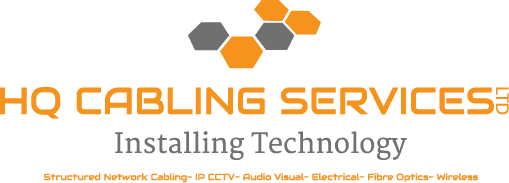Telecommunications are the backbone of modern communication, enabling the near-instantaneous exchange of information across vast distances.
From the early days of the telephone to today’s global internet, telecommunications has revolutionised how we connect, work, and access knowledge and entertainment.
This article explores the various types of telecommunications systems and services that power our hyper-connected world.
We’ll look at the fundamental infrastructure that makes telecommunication possible, as well as the different methods for transmitting voice, data, video, and other content.

What Are The Types Of Telecommunications?
Telecommunications can be broadly categorised into several types, each distinct in its function and purpose.
From the traditional telephone system enabling voice communication to the radio waves carrying sound, each type serves to connect us in different ways.
Visual media comes to life through television, while the internet has become the global platform for digital exchange.
Today, remote areas are reachable thanks to satellite technology, and cellular networks have untethered communication from fixed locations.
Lastly, optical fibres are the highways for vast amounts of data, pushing the boundaries of speed and efficiency.
Let’s examine each type of telecommunications in detail.
Telephone
The telephone is the traditional method of real-time voice communication over a wired network. It allows two-way conversations between geographically separated individuals.
Phones offer the benefit of immediate connection and clear audio for conversations.
Radio
Radio technology transmits audio signals through the air using radio waves.
Radio broadcasts can reach large audiences simultaneously, making it ideal for news, entertainment, and emergency alerts.
Television
The TV system transmits moving images and sounds electronically.
Modern TVs offer features like high-definition picture quality and on-demand content streaming, providing a rich entertainment experience.
Internet
The Internet is a global network of interconnected computer networks that facilitates data exchange.
It allows access to a vast amount of information, communication tools, and online services, revolutionising how we work, learn, and connect.
Satellite
The satellite communication system uses artificial satellites orbiting Earth to transmit signals.
Satellites enable communication in remote areas and provide services like GPS navigation and global internet access.
Cellular
Cellular mobile telecommunications networks allow users to make and receive calls, send text messages, and access data using portable devices like cell phones.
Cellular networks offer mobility and constant connection, making communication convenient and flexible.
Optical
A type of telecommunication that uses light pulses travelling through fibre optic cables to transmit data.
Optical fibres offer extremely high bandwidth and low signal loss, making them ideal for high-speed internet and data transfer.
What Are The Different Telecommunication Services?
Telecommunication services utilise the infrastructure we discussed to deliver various information forms to users. These services can be broadly categorised into the following areas:
Voice
This service allows real-time, two-way communication between individuals over a network.
Examples include traditional phone calls, internet calls (VoIP), and video conferencing. Voice services enable instant connection and clear audio for conversations.
Data
This service transmits digital information across a network. It forms the foundation for internet access, email, file sharing, and many other applications.
Data services allow users to access and exchange information in various formats.
Video
This service transmits moving images and sound electronically. Examples include video streaming services, video conferencing, and IPTV (internet protocol television).
Video services provide entertainment, communication, and educational opportunities.
Network
Network services encompass the infrastructure and protocols that enable communication between devices and users on a telecommunication network.
These services ensure the smooth flow of data, voice, and video traffic across the network. Network services provide the foundation for all other telecommunication services to function.
Broadcasting
This service involves one-way transmission of information to a large audience. Examples include radio and television broadcasts, satellite radio, and internet radio.
Broadcasting services allow for mass communication, entertainment, and information dissemination.

What Is Telecommunication Infrastructure?
Telecommunication infrastructure refers to the physical and electronic networks essential for communication operations.
Its distinguishing feature is the underlying framework that supports all forms of telecommunication, including cables, towers, satellites, and data centres.
These components are crucial for seamless global connectivity and communication efficiency.
What Is A Telecommunication System?
A telecommunication system is a setup of interconnected devices that enable the transmission of data over distances.
It’s characterised by its capacity to send and receive voice, video, and data, forming the backbone of modern communication networks.
What Is A Telecommunication Network?
A telecommunication network is an arrangement that allows the exchange of information between distant parties via electronic means.
Notably, it integrates routers, switches, and transmission lines to facilitate connectivity and data transfer between users and devices across various locations.
Before We Let You Go
As we wrap up our exploration into the world of telecommunications, remember the critical role it plays in our lives. We’ve seen how various modes of telecom, from telephones to optical fibres, create channels for us to share ideas, connect with loved ones, and conduct business.
At HQ Cabling Services Ltd, we understand the importance of staying connected, and that’s why we’re dedicated to providing you with the best services in network cabling, security, and audio-visual systems.
If your business seeks to build, upgrade, or maintain its telecommunication infrastructure, our skilled team is ready to help. With over 18 years of experience, we’re committed to delivering top-notch solutions tailored to your unique needs.Contact HQ Cabling Services Ltd today for a no-obligation quote and professional advice. It’s your move towards a connected future, and we’re here to make it happen.

